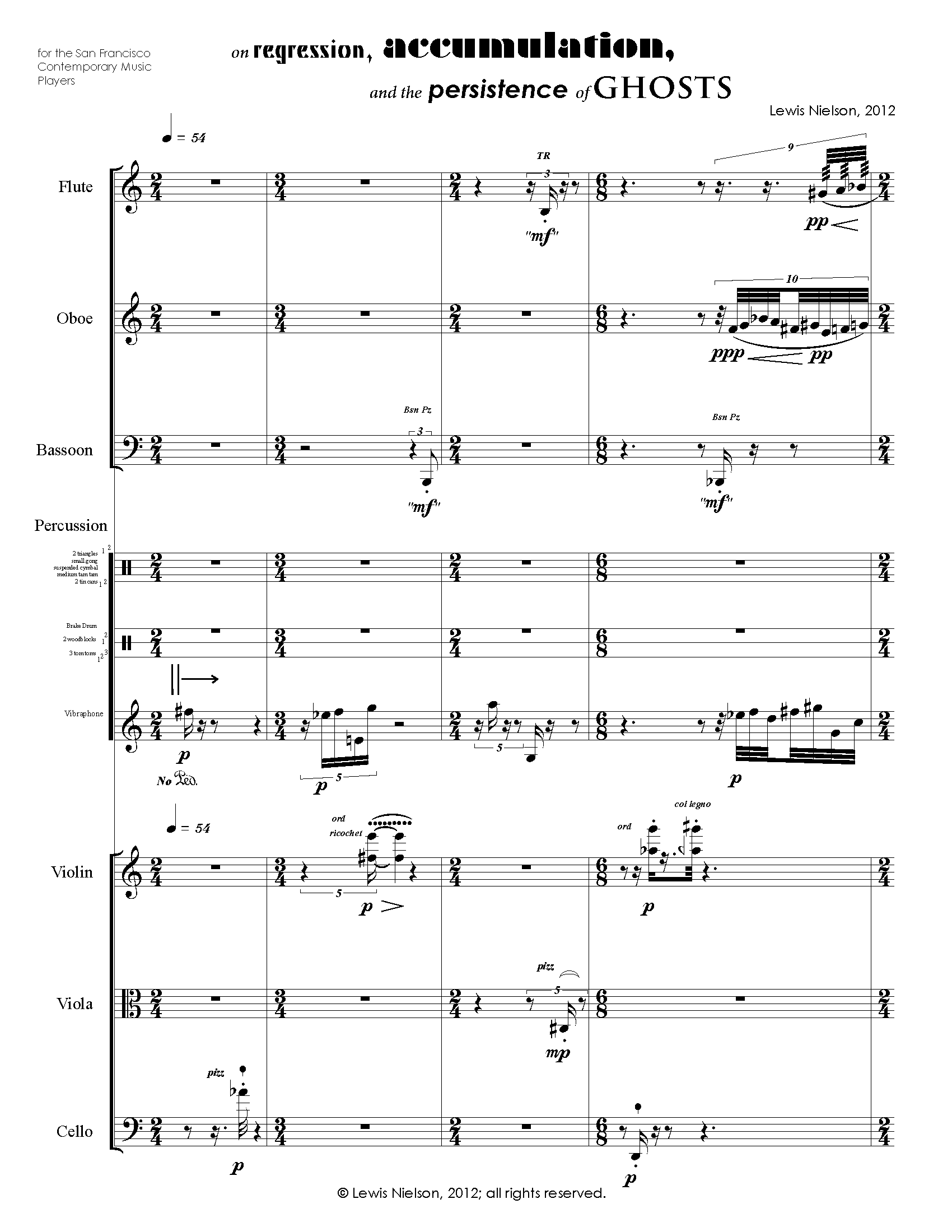Quick View
-
Files & Media
-
-
-
Detail
Commissioned by the San Francisco Contemporary Music Players;
Composer's note: Music, like genetic content, like crystal formations, possesses consistent general features from one work to another, and analytical understanding (the primary approach taken to the comprehension of music in both theoretical and historical study) dominates the discussion of how a sound, a combination of sounds, or a musical structure coheres. This manner of reasoning has a good bit less to do with the act or process of composing, which is or should be, to my mind, inherently synthetic and dialectical.
Musical instruments are not sound factories in the strictest sense. A factory consists of machines designed for relatively specified purposes and not adaptable to manufacturing products other than those for which they were designed. Many (perhaps most) composers and instrumentalists, however, do think of instruments exactly this way, with a definable product that is manufactured with little variation from the original design function.
Pedagogically, the performer and instrumentalist in this model simply follow the analytical model of “a good sound” or “a beautiful tone” and, with predictable minor variants with equally predictable and limited functions, create work that conforms to the time-honored production values of the both compositional and instrumental technique. Predictability becomes a virtue here, much as it does in industrial manufacturing, with the result that the musical product is a commodity and “sold” as such.
Adorno speculates that music is “like” a language but with numerous differences. I would add that a musical instrument is “like” a factory but with a vastly wider field of products, limited only to the ability of the composer to hear/imagine and the performer to hear/execute gradations of variance. Since Helmut Lachenmann demonstrated the benefit of this viewpoint, dialectical thought, innovative approaches, and multiple production possibilities for composing and sound execution have entered the thought process of many composers; unfortunately mainly as simply adding new bits of machinery to the old factory concept, with the result that the same old product has been “modernized,” “brought up to date” using the latest technology. The real import of Lachenmann's approach-one cannot say discovery since all of the sounds an instrument possess were always present, if only latently-concerns what can be done in the realms of perception and multi-dimensionality of structure. The factory we have now has no walls, no givens, and no absolutes.
-
-


All text is drawn from two sources: the final letter to the Chilean people by Salvador Allende and one of the last messages of Bobby Sands. The full texts used are as follows:
Y yo les digo que estoy seguro de que las semillas que hemos plantado en la conciencia de miles y miles de
chilenoS no se marchitaron para siempre.
... pero los procesos sociales pueden ser detenidos por delito ni fuerza. La historia es nuestra y gente hace historia.
-Salvador Allende
(trans) And I say to them that I am certain that the seeds which we have plantd in the good conscience of thousands and thousands will not be forever shriveled.
...but social processes can be arrested neither by crime nor force. History is ours, and the people make history.
Our revenge will be the laughter of our children.
-Bobby Sands